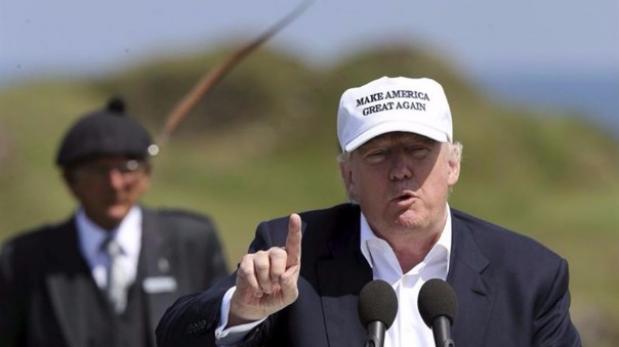
A large part of the poor white population who feel threatened by immigrants or are prejudiced against them will vote for the Republican candidate, Donald Trump, to be president of the United States. It is no coincidence, then, that Trump’s economic proposals single out Mexico — a country with which they have a free trade agreement and that also sends a large amount of immigrants to the north. But, in addition, it singles out China, a country that would be competing unfairly with American industry and displacing the workers who used to belong to a prosperous middle class.
The protectionist trade measures that Trump would use in his future administration would specifically affect China, the largest commercial partner to the U.S., and Mexico, its third largest trade partner after Canada. In both cases, they are countries that produce and export industrial products, moderately advanced in regard to capital and technology (though China is quickly entering into more advanced industries).
Should we in Peru be worried about possible repercussions from new protectionist U.S. trade policies?
In general terms it would seem that we should not because our exports to that market consist primarily of various food crops (coffee, asparagus, grapes, artichokes), cotton polo shirts, minerals and oil. However, we need to consider that, independent of whether the winner is Trump or Hillary Clinton (his Democratic rival and the favorite, according to the latest polls less than three months before the election), both could enforce strict adherence to labor and environmental clauses of the free trade agreement that is in place with our country. Therefore, our federal authorities should strengthen their efforts in supervision, oversight, control and penalties in these areas.
On the other hand, the massive deportation of immigrants living and working irregularly or illegally in the U.S. and the prioritization of “natives” for work contracts — an integral part of Trump’s proposal — would have an economic cost for our country, in addition to a human cost, because of the decrease in remittances from overseas workers.
We currently have an account with a deficient balance of payments. Furthermore, all the principal subaccounts yield negative balances for Peru — including the trade balance, the services balance and the income balance. The one exception is the current transfers balance. This subaccount, primarily composed of payments from Peruvians living overseas to help their families, is important from a macroeconomic perspective and should yield an estimated positive balance of $3.5 billion for 2016.
We should also point out that Trump’s proposal to void the recent accord on climate change reached in Paris is a way to obtain industrial advantage at the cost of countries like China and Mexico. The U.S. signed this accord this past April in a ceremony at the U.N. and its cancellation would thwart the international effort to limit an increase in the average global temperature caused by emissions of greenhouse gases. The result of Trump’s energy policy of environmental deregulation of the coal industry would have equally negative results for global efforts to mitigate emissions of greenhouse gases. Because of its high climate vulnerability, our country could be adversely affected by this political decision.

Leave a Reply
You must be logged in to post a comment.